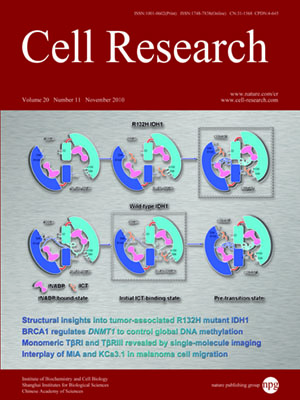
Volume 20, No 11, Nov 2010
ISSN: 1001-0602
EISSN: 1748-7838 2018
impact factor 17.848*
(Clarivate Analytics, 2019)
Volume 20 Issue 11, November 2010: 1224-1238
ORIGINAL ARTICLES
Migration-associated secretion of melanoma inhibitory activity at the cell rear is supported by KCa3.1 potassium channels
Jennifer Schmidt1, Kristin Friebel2, Roland Sch鰊herr2, Marc G Coppolino3 and Anja-Katrin Bosserhoff1
1Institute of Pathology, University of Regensburg, Franz-Josef-Strauss-Allee 11, D-93053 Regensburg, Germany
Correspondence: Anja-Katrin Bosserhoff,(anja.bosserhoff@klinik.uni-regensburg.de)
Malignant melanoma, characterized by invasive local growth and early formation of metastases, is the most aggressive type of skin cancer. Melanoma inhibitory activity (MIA), secreted by malignant melanoma cells, interacts with the cell adhesion receptors, integrins α
4β
1 and α
5β
1, facilitating cell detachment and promoting formation of metastases. In the present study, we demonstrate that MIA secretion is confined to the rear end of migrating cells, while in non-migrating cells MIA accumulates in the actin cortex. MIA protein takes a conventional secretory pathway including coat protein complex I (COPI)- and coat protein complex II (COPII)-dependent protein transport to the cell periphery, where its final release depends on intracellular Ca
2+ ions. Interestingly, the Ca
2+-activated K
+-channel, subfamily N, member 4 (KCa3.1), known to be active at the rear end of migrating cells, was found to support MIA secretion. Secretion was diminished by the specific KCa3.1 channel inhibitor TRAM-34 and by expression of dominant-negative mutants of the channel. In summary, we have elucidated the migration-associated transport of MIA protein to the cell rear and also disclosed a new mechanism by which KCa3.1 potassium channels promote cell migration.
Cell Research (2010) 20:1224-1238. doi:10.1038/cr.2010.121; published online 24 August 2010
FULL TEXT | PDF
Browse 2477


